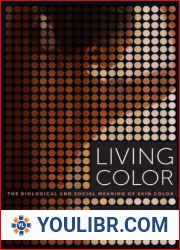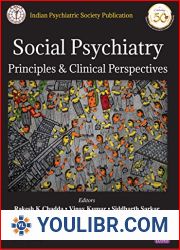
BOOKS - Living Color: The Biological and Social Meaning of Skin Color

Living Color: The Biological and Social Meaning of Skin Color
Author: Nina G. Jablonski
Year: January 1, 2012
Format: PDF
File size: PDF 5.9 MB
Language: English

Year: January 1, 2012
Format: PDF
File size: PDF 5.9 MB
Language: English

Living Color: The Biological and Social Meaning of Skin Color As human beings, we often take for granted the one aspect of our bodies that sets us apart from all other species - our skin color. However, the pigmentation of our skin has been a defining feature of human history and culture, shaping our interactions with each other and the world around us. In her groundbreaking book, Living Color: The Biological and Social Meaning of Skin Color, Nina G. Jablonski delves into the fascinating story of how our skin color has evolved over time, and how it has influenced our social interactions in profound and complex ways. From Prehistory to Present: The Evolution of Skin Color Jablonski begins by exploring the biology and evolution of skin pigmentation, explaining how skin color changed as humans migrated across the globe. She examines the relationship between melanin pigment and sunlight, and considers the consequences of rapid migrations, vacations, and other lifestyle choices that can create mismatches between our skin color and our environment. Through this lens, she reveals how skin color has become a biological trait with great social meaning, shaped by both evolution and culture.
Живой цвет: Биологическое и социальное значение цвета кожи Как люди, мы часто принимаем как должное один аспект нашего тела, который отличает нас от всех других видов - наш цвет кожи. Тем не менее, пигментация нашей кожи была определяющей чертой человеческой истории и культуры, формируя наше взаимодействие друг с другом и с окружающим миром. В своей новаторской книге «Живой цвет: биологическое и социальное значение цвета кожи» Нина Г. Яблонски углубляется в увлекательную историю о том, как наш цвет кожи развивался с течением времени и как это повлияло на наши социальные взаимодействия глубокими и сложными способами. От предыстории до настоящего времени: Эволюция цвета кожи Яблонски начинает с изучения биологии и эволюции пигментации кожи, объясняя, как изменился цвет кожи по мере того, как люди мигрировали по всему миру. Она изучает взаимосвязь между пигментом меланином и солнечным светом, а также рассматривает последствия быстрых миграций, отпусков и других вариантов образа жизни, которые могут создать несоответствия между цветом нашей кожи и окружающей средой. Через эту линзу она раскрывает, как цвет кожи стал биологической чертой с большим социальным смыслом, сформированным как эволюцией, так и культурой.
Couleur vivante : gnification biologique et sociale de la couleur de la peau En tant qu'êtres humains, nous tenons souvent pour acquis un aspect de notre corps qui nous distingue de toutes les autres espèces - notre couleur de peau. Pourtant, la pigmentation de notre peau a été un trait déterminant de l'histoire et de la culture humaines, façonnant notre interaction entre nous et avec le monde qui nous entoure. Dans son livre pionnier « La couleur vivante : la signification biologique et sociale de la couleur de la peau », Nina G. Jablonski explore une histoire fascinante sur la façon dont notre couleur de peau a évolué au fil du temps et comment elle a influencé nos interactions sociales de manière profonde et complexe. De l'histoire à nos jours : L'évolution de la couleur de la peau de Jablonski commence par étudier la biologie et l'évolution de la pigmentation de la peau, expliquant comment la couleur de la peau a changé au fur et à mesure que les gens migrent dans le monde entier. Elle étudie la relation entre le pigment mélanine et la lumière du soleil et examine les conséquences des migrations rapides, des vacances et d'autres options de mode de vie qui peuvent créer des incohérences entre la couleur de notre peau et l'environnement. Grâce à cette lentille, elle révèle comment la couleur de la peau est devenue un trait biologique avec un grand sens social, façonné à la fois par l'évolution et la culture.
Color vivo: Valor biológico y social del color de piel Como personas, a menudo damos por sentado un aspecto de nuestro cuerpo que nos diferencia de cualquier otra clase - nuestro color de piel. n embargo, la pigmentación de nuestra piel ha sido un rasgo determinante de la historia y la cultura humanas, configurando nuestra interacción entre sí y con el mundo que nos rodea. En su libro pionero «Color vivo: el significado biológico y social del color de piel», Nina G. Jablonski profundiza en la fascinante historia de cómo nuestro color de piel ha evolucionado a lo largo del tiempo y cómo ha influido en nuestras interacciones sociales de maneras profundas y complejas. Desde la prehistoria hasta la actualidad: La evolución del color de la piel Jablonski comienza estudiando la biología y la evolución de la pigmentación de la piel, explicando cómo el color de la piel ha cambiado a medida que las personas han migrado por todo el mundo. Estudia la relación entre el pigmento melanina y la luz solar, y también examina los efectos de las migraciones rápidas, las vacaciones y otras opciones de estilo de vida que pueden crear incongruencias entre el color de nuestra piel y el entorno. A través de esta lente, revela cómo el color de la piel se ha convertido en un rasgo biológico con un gran sentido social formado tanto por la evolución como por la cultura.
Cor viva: Valor biológico e social da cor da pele Como humanos, muitas vezes tomamos como certo um aspecto do nosso corpo que nos diferencia de todos os outros tipos: a nossa cor de pele. No entanto, a pigmentação da nossa pele foi uma característica determinante da história e da cultura humanas, formando a nossa interação entre nós e com o mundo ao redor. Em seu livro inovador «A Cor Viva: O gnificado Biológico e Social da Cor», Nina G. Jablonski aprofundou-se na história fascinante de como nossa cor evoluiu ao longo do tempo e como isso afetou nossas interações sociais de formas profundas e complexas. A evolução da cor da pele de Jablonski começa por estudar a biologia e evolução da pigmentação da pele, explicando como a cor da pele mudou à medida que as pessoas migraram para todo o mundo. Ela estuda a relação entre o pigmento melanino e a luz solar, e também aborda os efeitos de migrações rápidas, férias e outras opções de estilo de vida que podem criar discrepâncias entre a cor da nossa pele e o ambiente. Através desta lente, ela revela como a cor da pele se tornou um traço biológico com um grande significado social, moldado tanto pela evolução como pela cultura.
Il colore vivo: Il valore biologico e sociale del colore della pelle Come gli esseri umani, spesso diamo per scontato un aspetto del nostro corpo che ci distingue da tutti gli altri tipi - il nostro colore della pelle. Tuttavia, la pigmentazione della nostra pelle è stata una caratteristica determinante della storia e della cultura umana, formando la nostra interazione con l'altro e con il mondo che ci circonda. Nel suo libro innovativo «Il colore vivo: il significato biologico e sociale del colore della pelle», Nina G. Jablonski approfondisce la storia affascinante di come il nostro colore si sia evoluto nel corso del tempo e di come ciò abbia influenzato le nostre interazioni sociali in modi profondi e complessi. Dalla storia a oggi: l'evoluzione del colore della pelle di Jablonski inizia studiando la biologia e l'evoluzione della pigmentazione della pelle, spiegando come il colore della pelle è cambiato man mano che le persone migrano in tutto il mondo. Sta studiando la relazione tra il pigmento melanina e la luce solare, e sta valutando le conseguenze di migrazioni rapide, ferie e altri stili di vita che possono creare discrepanze tra il colore della nostra pelle e l'ambiente. Attraverso questa lente, rivela come il colore della pelle sia diventato un tratto biologico con un grande significato sociale, formato sia dall'evoluzione che dalla cultura.
Living Color: Die biologische und soziale Bedeutung der Hautfarbe Als Menschen nehmen wir oft einen Aspekt unseres Körpers als selbstverständlich hin, der uns von allen anderen Arten unterscheidet - unsere Hautfarbe. Die Pigmentierung unserer Haut war jedoch ein bestimmendes Merkmal der menschlichen Geschichte und Kultur und prägte unsere Interaktion miteinander und mit der Welt um uns herum. In ihrem bahnbrechenden Buch Living Color: The Biological and Social Meaning of Skin Color geht Nina G. Jablonski tiefer in die faszinierende Geschichte ein, wie sich unsere Hautfarbe im Laufe der Zeit entwickelt hat und wie sie unsere sozialen Interaktionen auf tiefgreifende und komplexe Weise beeinflusst hat. Von der Vorgeschichte bis zur Gegenwart: Die Evolution der Hautfarbe Jablonski beginnt mit dem Studium der Biologie und Evolution der Hautpigmentierung und erklärt, wie sich die Hautfarbe verändert hat, als die Menschen um die Welt wanderten. e untersucht die Beziehung zwischen dem Pigment Melanin und dem Sonnenlicht und untersucht die Auswirkungen schneller Migrationen, Urlaube und anderer bensstiloptionen, die zu Inkonsistenzen zwischen unserer Hautfarbe und unserer Umwelt führen können. Durch diese Linse enthüllt sie, wie die Hautfarbe zu einem biologischen Merkmal mit einer großen sozialen Bedeutung wurde, die sowohl von der Evolution als auch von der Kultur geprägt wurde.
''
Canlı Renk: Ten Renginin Biyolojik ve Sosyal Anlamı İnsanlar olarak, genellikle vücudumuzun bizi diğer tüm türlerden ayıran bir yönünü - ten rengimizi - kabul ederiz. Yine de cildimizin pigmentasyonu, birbirimizle ve çevremizdeki dünyayla etkileşimlerimizi şekillendiren insanlık tarihinin ve kültürünün belirleyici bir özelliği olmuştur. Çığır açan "Living Color: The Biological and Social Meaning of Skin Color'adlı kitabında Nina G. Jablonski, ten rengimizin zaman içinde nasıl evrimleştiğine ve sosyal etkileşimlerimizi derin ve karmaşık yollarla nasıl etkilediğine dair büyüleyici bir hikaye anlatıyor. Tarih öncesinden günümüze: Cilt renginin evrimi Jablonski, cilt pigmentasyonunun biyolojisini ve evrimini inceleyerek, insanlar dünyanın dört bir yanına göç ettikçe cilt renginin nasıl değiştiğini açıklayarak başlar. Pigment melanin ve güneş ışığı arasındaki ilişkiyi inceler ve cilt rengimiz ile çevremiz arasında tutarsızlıklar yaratabilecek hızlı göçlerin, tatillerin ve diğer yaşam tarzı seçimlerinin etkilerini göz önünde bulundurur. Bu mercek aracılığıyla, cilt renginin hem evrim hem de kültür tarafından şekillendirilen büyük sosyal anlamı olan biyolojik bir özellik haline geldiğini ortaya koyuyor.
اللون الحي: المعنى البيولوجي والاجتماعي للون البشرة كبشر، غالبًا ما نأخذ جانبًا واحدًا من أجسامنا يميزنا عن جميع الأنواع الأخرى - لون بشرتنا. ومع ذلك، كان تصبغ بشرتنا سمة مميزة لتاريخ البشرية وثقافتها، حيث شكلت تفاعلاتنا مع بعضنا البعض ومع العالم من حولنا. في كتابها الرائد، «اللون الحي: المعنى البيولوجي والاجتماعي لون البشرة»، تتعمق نينا جابلونسكي في قصة رائعة عن كيفية تطور لون بشرتنا بمرور الوقت وكيف أثر ذلك على تفاعلاتنا الاجتماعية بطرق عميقة ومعقدة. من عصور ما قبل التاريخ إلى الوقت الحاضر: يبدأ تطور لون البشرة Jablonski بدراسة بيولوجيا وتطور تصبغ الجلد، موضحًا كيف تغير لون البشرة مع هجرة الناس حول العالم. تدرس العلاقة بين صبغة الميلانين وضوء الشمس، وتدرس آثار الهجرات السريعة والإجازات وخيارات نمط الحياة الأخرى التي يمكن أن تخلق تناقضات بين لون بشرتنا وبيئتنا. من خلال هذه العدسة، تكشف كيف أصبح لون البشرة سمة بيولوجية ذات معنى اجتماعي كبير شكله كل من التطور والثقافة.








 49
49  2 TON
2 TON


![[The Infinite Bonds of Family: Domesticity in Canada, 1850-1940 (Themes in canadian social history) (Themes in Canadian History)] [Author: Comacchio, Cynthia R.] [May, 1999] [The Infinite Bonds of Family: Domesticity in Canada, 1850-1940 (Themes in canadian social history) (Themes in Canadian History)] [Author: Comacchio, Cynthia R.] [May, 1999]](https://youlibr.com/img/7/708001_oc.jpg)


































